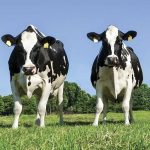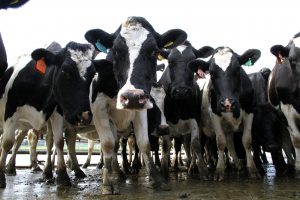
There was a glimmer of hope for Class III milk prices during the week of March 11th only to have the support knocked out from under the market by the end of the week. Some traders became excited over the potential that buyers of cheese would take advantage of the low prices and buy more heavily. Traders pushed prices higher which resulted in Class III futures already having stronger prices factored in. Nearby futures contracts fell back near the lows again. This pattern may be repeated a few times before the market moves higher. The low cheese prices will see buyer interest cause the market to bounce. Those bounces may be short-lived, but it may indicate the market has bottomed and eventually cheese prices will either move to a higher trading range or they will slowly trend higher. Prices will not remain at this level indefinitely.
This time of year generally does not see aggressive demand which limits the desire of end users to buy very much ahead and then pay storage for an extended period. It also depends on whether purchasing is done for immediate demand or for building aging programs. Milk production is running below a year ago and is likely to continue that way for much of this year. The key to better milk prices will be up to the level of demand both domestically and internationally. That is not just for cheese but for all dairy products.
There will be a lot of interest in the level of cow numbers moving forward. The February Milk Production report will show what cow numbers will be compared to the previous month. This may have an impact on the trading of milk futures. The January Milk Production report showed a decrease in cow numbers of 23,000 head from December which resulted in a strong price movement higher in anticipation of a potential repeat of what took place in the fall of 2021. However, the time was not right and buyers of products of the underlying cash market did not materialize as had been anticipated. Another substantial decline in cow numbers in February could result in the same response, but it again could be short-lived due to the time of year when demand is slower.
Looking back at 2023, some interesting statistics are carried over into this year that could result in some stronger prices later this year if demand improves. There were 16 states in the U.S. that showed a higher percentage of milk production for the year. Of those 16 states, there were 9 of them that had an increase in cow numbers for the year. There were 5 of the states that had an increase in production that had steady cow numbers with 2 states increasing in production even with a decline in cow numbers. There were 13 states which maintained steady cow numbers last year compared to 2022. There were 28 states which decreased in cow numbers.
Continued low milk prices will not change this much over the rest of this year and it could see further reduction in cow numbers as heifer replacements are tight and increasing in price. This would tighten milk, eventually increasing milk prices.
Robin Schmahl is a commodity broker with AgDairy, the dairy division of John Stewart & Associates Inc. (JSA). JSA is a full-service commodity brokerage firm based out of St. Joseph, MO. Robin’s office is located in Elkhart Lake, Wisconsin. Robin may be reached at 877-256-3253 or through the website www.agdairy.com.
The thoughts expressed and the basic data from which they are drawn are believed to be reliable but cannot be guaranteed. Any opinions expressed herein are subject to change without notice. Hypothetical or simulated performance results have certain inherent limitations. Simulated results do not represent actual trading. Simulated trading programs are subject to the benefit of hindsight. No representation is being made that any account will or is likely to achieve profits or losses similar to those shown. There is risk of loss in trading commodity futures and options on futures. It may not be suitable for everyone. This material has been prepared by an employee or agent of JSA and is in the nature of a solicitation. By accepting this communication, you acknowledge and agree that you are not, and will not rely solely on this communication for making trading decisions.
You can now read the most important #news on #eDairyNews #Whatsapp channels!!!
🇺🇸 eDairy News INGLÊS: https://whatsapp.com/channel/0029VaKsjzGDTkJyIN6hcP1K

























